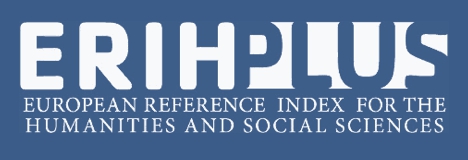FROM EXCEPTIONAL LANDSCAPES TO GEODIVERSITY IN THE CARAJÁS MOSAIC, EASTERN AMAZON
Abstract
The Amazon region is known for its significant biodiversity, but geodiversity was underestimated for a long time. Relating ecological (refuges), chorological and geographic factors makes it possible to present the importance of integrated analysis for studies of the potential of geosystemic services offered by geodiverse heritage. The location chosen for the empirical questions was the mosaic of conservation units of Carajás, located in the southeast of Pará. Environmental cartography and geoinformative techniques made it possible to characterize five geodiversity indices on a scale of 1:30.000, demonstrating that 55% of the area has indices high to moderately high geodiversity. The other areas have good indexes, which allow us to affirm the importance of environmental policies for the Carajás mosaic.
References
AB’ SÁBER. A. N. Potencialidades paisagísticas brasileiras. IBGE, Superintendência de Recursos Naturais e Meio Ambiente. Recursos naturais, meio ambiente e poluição. Rio de Janeiro, SUPREN, v. 1, 1977.
AB’SÁBER, A. N. A Amazônia: do discurso à práxis. 2 ed. São Paulo: Editora da Universidade de São Paulo, 2004. 320p.
AB’SÁBER, A. N. Bases conceituais e papel do conhecimento na previsão de impactos. In: PLANTENBERG, C. M.; AB`SÁBER, A. N. (Orgs.) Previsão de impactos: estudos de impacto ambiental no leste, oeste e sul experiências no Brasil, Rússia e Alemanha. EDUSP, São Paulo, 2006. p. 27-49.
BASTIAN, O.; GRUNEWALD, K.; KHOROSHEV, A. V. The significance of geosystem and landscape concepts for the assessment of ecosystem services: exemplified in a case study in Russia. Landscape Ecol, v. 30, n. 5, 2015. Disponível em:
BERTRAND, G. Paysage et géographie physique globale. Esquisse méthodologique. Revue Géographique des Pyrénées et du Sud-Ouest, n. 39, v. 3, 1968. p. 249-272.
BRILHA, J. Património Geológico e Geoconservação. Portugal: Palimagem Editores, 2005. 175p.
BRILHA, J. Inventory and Quantitative Assessment of Geosites and Geodiversity Sites: a Review. Geoheritage, n. 8, 2016.
BUSH, M. B. Of orogeny, precipitation, precession and parrots. Journal of Biogeography, v. 32, n. 8, 2005. Disponível em:
CARMO, F. F.; KAMINO, H. L. Y. Geossistemas Ferruginosos do Brasil: áreas prioritárias para conservação da diversidade geológica e biológica, patrimônio cultural e serviços ambientais. Belo Horizonte: 3i Editora, 2015. 552p.
CONNOR, E. The role of Pleistocene forest refugia in the evolution and biogeography of tropical biotas. Tree, v. 1, n. 6, 1986.
COLINVAUX, Paul A. A new vicariance model for Amazonian endemics. Global Ecology and Biogeography, v. 7, n. 2, 1998. Disponível em:
COLINVAUX, P. A.; OLIVEIRA, P. E.; BUSH, M. B. Amazonian and Neotropical plant communities on glacial time‐scales: The failure of the aridity and refuge hypotheses. Quaternary Science Reviews, v. 19, 2000. Disponível em:
COLINVAUX, P. A.; OLIVEIRA, P. E.; MORENO, J. E.; MILLER, M. C.; BUSH, M. B. A long pollen record from lowland Amazonia: Forest and cooling in glacial times. Science, v. 274, n. 5284, 1996. Disponível em:
CLAUDIO-SALES, V. Geodiversity and geoheritage in the perspective of geography. Bulletin of Geography. Physical Geography Series, n. 21, p. 45-52, 2021. Disponível em:
GUPTA, A. Tropical Geomorphology. Cambridge, 2011. 386p.
GUPTA, A. The changing geomorphology of the humid tropics. Geomorphology. Vol. 7, p. 165-186, 1993. Disponível em:
GRAY, M. Other nature: geodiversity and geosystem services. Environmental
Conservation, v. 38, n. 3, 2011. Disponível em: https://www.cambridge.org/core/journals/environmental-conservation/article/other-nature-geodiversity-and-geosystem-services/EF61A0EC8A2AB89E918AEF7CCDD082C3. Acesso em: 03 fevereiro 2024. https://doi.org/10.1017/S0376892911000117.
GRAY, M. Geodiversity: valuing and conserving abiotic nature. West Sussex: John Wiley & Sons Ltd, 2004. 512p.
HAFFER, J. Speciation in Amazonian Forest. Science, New Series, v. 165, n. 3889, 1969. Disponível em:
HAFFER, J. Pleistoceno speciation in Amazonian Birds. Amazoniana, v. 6, n. 2, 1977.
HAFFER, J. Alternative models of vertebrate speciation in Amazonia: an overview. Biodiversity and Conservation, v. 6, 1997.
HAFFER, J. Hypotheses to explain the origin of species in Amazonia. Braz. J. Biol. v. 68, n. 4, 2008. Disponível em:
HAFFER, J. Impulsos climáticos da evolução na Amazônia durante o Cenozóico: sobre a teoria dos Refúgios da diferenciação biótica. Estudos Avançados, v. 46, n. 16, 2002. Disponível em:
INÁCIO, A. P.; SILVA, E. V.; VIDAL, M. R. Análise geoecológica da paisagem da floresta nacional de Carajás – PA, Brasil. Rede – Revista Eletrônica do PRODEMA, Fortaleza, Brasil, v. 15, n. 2, 2022.
KHOROSHEV, A. Landscape-Ecological Approach to Spatial Planning as a Tool to Minimize Socio-Ecological Conflicts: Case Study of Agrolandscape in the Taiga Zone of Russia. Land. v. 9, n. 6, 2020. Disponível em: https://www.mdpi.com/2073-445X/9/6/192. Acesso em: 05 março 2024. https://doi.org/10.3390/land9060192.
MASCARENHAS, A. L. S.; VIDAL, M. R. Valorizar a geodiversidade e proteger os serviços geossistêmicos na Região de Carajás. Confins, n. 61, 2023. Disponível em: https://journals.openedition.org/confins/55066#quotation. Acesso em: 23 maço 2024. https://doi.org/10.4000/confins.55066.
MONTEIRO, M. A.; SILVA, P.R. Expansão geográfica, fronteira e regionalização: a região de Carajás, Confins. n. 49. 2021. Disponível em: https://journals.openedition.org/confins/35296. Acesso em: 24 fevereiro 2024. https://doi.org/10.4000/confins.35296.
PANIZZA, M. Geomorphosites: concepts, methods and examples of geomorphological survey. Chinese Science Bulletin, v. 46, 2001.
PANIZZA, M.; PIACENTE, S. Cultural Geomorphology an geodiversity. In: REYNALD, E.; CORATZA, P.; REGOLINI-BISSIG. G. (Org.) Geomorphosites. Munique: Pfeil, 2009. p. 35-48.
RODRIGUEZ, J. M. M.; SILVA, E. V. Planejamento e Gestão ambiental: subsídios da geoecologia das paisagens e da teoria geossistêmica. EdUFC, Fortaleza, 2013. 370p.
RODRIGUEZ, J. M. M.; CAVALCANTI, A. P. B. Geoecologia das paisagens: uma visão geossistêmica da análise ambiental. 6ª edição, EdUFC, Fortaleza, 2022. 332p.
ROCHA, D. G.; KAEFER, I. L. What has become of the refugia hypothesis to explain biological diversity in Amazonia? Ecol Evol. 2019. Disponível em: https://ppbio.inpa.gov.br/sites/default/files/artigo_Rocha_and_Kaefer_2019_Ecology_and_Evolution.pdf. Acesso em: 07 fevereiro 2024. https://doi.org/10.1002/ece3.5051.
SHARPLES, C. A Methodology for the Identification of Significant Landforms and Geological Sites for Geoconservation Purposes, Forestray Commission Tasmania, 1993. 31p.
TANSLEY, A. G. The Use and Abuse of Vegetational Concepts and Terms. Ecology, v. 16, n. 3, p. 284-307, 1935. Disponível em: https://www.jstor.org/stable/1930070. Acesso em: 11 março 2024. https://doi.org/10.2307/1930070.
VANZOLINI, P. E.; WILLIAMS, E. E. The Vanishing Refuge: A mechanism for ecogeographic speciation. Papéis Avulsos De Zoologia, n. 34, p. 251-255, 1980. Disponível em: https://www.revistas.usp.br/paz/article/view/211249. Acesso em: 16 março 2024. https://doi.org/10.11606/0031-1049.1980.
VIDAL, M. R.; MASCARENHAS, A. L. S. Estrutura e funcionamento das paisagens litorâneas cearenses à luz da Geoecologia das Paisagens. Geousp – Espaço e Tempo (On-line), v. 24, n. 3, p. 600-615. 2020. DOI: https://doi.org/10.11606/issn.2179-0892.geousp.2020.121030
VIDAL, M. R.; SILVA, E. V.; MASCARENHAS, A. L. S. Bases geoecológicas da serra de Carajás na Amazônia oriental brasileira. In: CHÁVEZ, E. S.; DIAS, L. S (Org.) Cartografia Biogeográfica e da Paisagem. v.3, Ed. Tupã, ANAP, 2022. p. 135-150.
VIDAL, M. R.; SILVA, E. V. da. Enfoque estrutural e funcional da geoecologia das paisagens: modelos e aplicações em ambientes tropicais. Geofronter, Campo Grande, v.7 n. 1, p. 1-19, 2021. Disponível em: https://periodicosonline.uems.br/index.php/GEOF/article/view/6708. Acesso em: 16 março 2024
VIDAL, M. R.; MASCARENHAS, A. Levi S. Mapeamento geoecológico no Parque Nacional dos Campos Ferruginosos de Carajás/Pará-Brasil. Ateliê Geográfico, Goiânia, v. 14, n. 3, p. 218–238, 2020. Disponível em: https://revistas.ufg.br/atelie/article/view/59613. Acesso em: 19 março 2024. https://doi.org/10.5216/ag.v14i1.59613.

This work is licensed under a Creative Commons Attribution-NonCommercial 4.0 International License.
Policy Proposal for Free Access Journals
Authors who publish in this journal agree to the following terms:
a. Authors retain the copyright and grant the journal the right of first publication, with the work simultaneously licensed under the Creative Commons Attribution License which allows the sharing of the work with acknowledgment of the authorship of the work and initial publication in this journal.
b. Authors are authorized to take additional contracts separately, for non-exclusive distribution of the version of the work published in this journal (eg publish in institutional repository or as a book chapter), with acknowledgment of authorship and initial publication in this journal.
c. Authors are allowed and encouraged to publish and distribute their work online (eg in institutional repositories or on their personal page) at any point before or during the editorial process, as this can generate productive changes, as well as increase the impact and The citation of published work (See The Effect of Free Access).





















